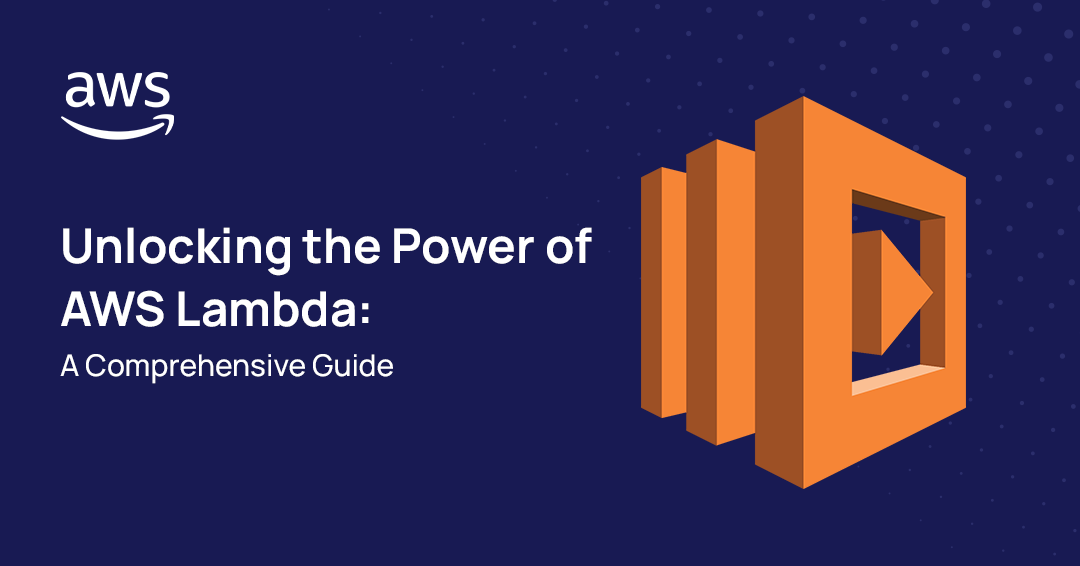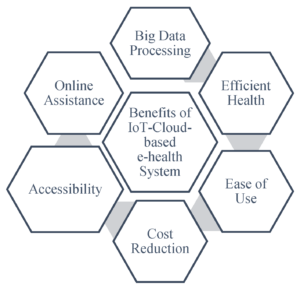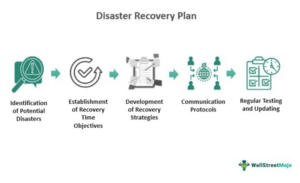In today’s fast-paced digital landscape, businesses are increasingly embracing multi-cloud architecture as a strategic solution to optimize their IT infrastructure and drive innovation. This article dives deep into the world of multi-cloud architecture, shedding light on its significance, benefits, and implementation strategies. Whether you’re a business owner, IT professional, or simply curious about the latest trends in cloud computing, this comprehensive guide will equip you with the knowledge you need to harness the power of multi-cloud architecture.
Understanding Multi-Cloud Architecture: A Primer
Multi-cloud architecture refers to the practice of using multiple cloud computing services from different providers to meet specific business needs. It involves the distribution of workloads, applications, and data across different cloud environments. By leveraging the strengths of various cloud providers, organizations can achieve greater flexibility, scalability, and resiliency.
There are two primary approaches to multi-cloud architecture: horizontal and vertical. Horizontal multi-cloud involves using multiple cloud providers for different applications or services, while vertical multi-cloud involves using multiple cloud providers for different layers of a single application or service.
The Role of Multi-Cloud Architecture
Multi-cloud architecture plays a vital role in modernizing IT environments. It enables organizations to avoid vendor lock-in, reduce dependency on a single provider, and leverage the best features and services offered by different cloud providers. With multi-cloud, businesses can optimize costs, achieve high availability, and ensure data sovereignty.
Benefits of Multi-Cloud Architecture
The adoption of multi-cloud architecture brings numerous benefits to organizations:
- Improved Scalability: By distributing workloads across multiple cloud providers, organizations can scale their infrastructure more efficiently and handle increased demand without disruptions.
- Enhanced Security: Multi-cloud architecture enables organizations to implement diverse security measures across different cloud environments, reducing the risk of data breaches and increasing overall resilience.
- Cost Optimization: By selecting the most cost-effective cloud services for specific workloads, organizations can optimize their cloud spending and achieve better return on investment.
- Increased Flexibility: Multi-cloud architecture allows organizations to choose the cloud services that best suit their unique requirements, ensuring flexibility and adaptability in a rapidly changing business landscape.
Implementing Multi-Cloud Architecture: Best Practices
Implementing a successful multi-cloud architecture requires careful planning and execution. Here are some best practices to consider:
1. Define Objectives and Requirements
Start by clearly defining your organization’s objectives and requirements. Understand the specific business needs that can be addressed through multi-cloud architecture and outline the desired outcomes.
2. Evaluate Cloud Providers
Conduct a thorough evaluation of different cloud providers to determine which ones align with your organization’s objectives. Consider factors such as pricing, service offerings, reliability, security, and geographical coverage.
3. Design for Interoperability
Design your multi-cloud architecture with interoperability in mind. Ensure that different cloud services can seamlessly communicate and exchange data, allowing for efficient workload distribution and resource sharing.
4. Implement Robust Security Measures
Develop a comprehensive security strategy that covers all aspects of your multi-cloud architecture. Implement encryption, access controls, and monitoring tools to safeguard sensitive data and mitigate potential security risks.
5. Establish Effective Governance and Management
Establish governance policies and procedures to manage your multi-cloud environment effectively. Implement centralized management tools and processes to monitor performance, track expenses, and enforce compliance.
6. Plan for Data Migration and Integration
Plan for seamless data migration and integration across different cloud providers. Define migration strategies and ensure compatibility between applications and services hosted on different clouds.
7. Automate Where Possible
Leverage automation tools and scripts to streamline operations and reduce manual effort. Automate tasks such as workload provisioning, scaling, and monitoring to maximize efficiency and minimize human error.
8. Continuously Monitor and Optimize
Regularly monitor the performance and cost of your multi-cloud architecture. Identify areas for improvement, optimize resource allocation, and leverage analytics to gain insights into usage patterns and trends.
Overcoming Challenges in Multi-Cloud Architecture
While multi-cloud architecture offers numerous benefits, it also presents certain challenges that organizations must overcome:
Vendor Lock-In
One of the primary challenges in multi-cloud architecture is avoiding vendor lock-in. Organizations must ensure that their applications and data are not tightly coupled with a single cloud provider’s proprietary services, making it difficult to transition to another provider if needed.
Data Sovereignty and Compliance
Organizations operating in multiple jurisdictions must navigate data sovereignty and compliance requirements. They need to ensure that their multi-cloud architecture complies with relevant regulations and that data is stored and processed in accordance with local laws.
Integration Complexity
Integrating different cloud services and applications can be a complex task. Organizations must carefully plan and execute integration strategies to ensure seamless communication and data exchange across multiple cloud environments.
Security and Governance
With multiple cloud providers, organizations need to implement robust security measures and establish effective governance policies. Ensuring consistent security controls, access management, and compliance across different clouds is crucial for maintaining a secure and well-governed multi-cloud environment.
Cost Optimization
Managing costs in a multi-cloud environment requires careful monitoring and optimization. Organizations must constantly evaluate their resource usage, rightsizing instances, and leveraging cost management tools to avoid unnecessary expenses and optimize their cloud spending.
Multi-Cloud Security: Protecting Your Assets
Security is a paramount concern in any cloud architecture, and multi-cloud environments are no exception. Organizations must implement a comprehensive security strategy to protect their assets across multiple cloud providers:
Data Encryption
Encrypting data at rest and in transit is essential to ensure its confidentiality and integrity. Implement robust encryption methods, such as AES-256, and use secure communication protocols, such as TLS, to protect data as it moves between different cloud environments.
Identity and Access Management
Implement a robust identity and access management (IAM) framework to control user access to resources in your multi-cloud environment. Use strong authentication mechanisms, implement role-based access controls, and regularly review and revoke access privileges to maintain a secure environment.
Network Segmentation
Segment your network in a multi-cloud architecture to isolate different workloads and restrict communication between them. Implement firewalls, virtual private networks (VPNs), and network access control lists (ACLs) to control traffic flow and prevent unauthorized access.
Threat Detection and Monitoring
Deploy advanced threat detection and monitoring tools in your multi-cloud environment to detect and respond to potential security incidents. Use intrusion detection systems (IDS), security information and event management (SIEM) platforms, and real-time analytics to identify and mitigate threats.
Regular Audits and Compliance
Regularly conduct security audits and assessments to ensure compliance with industry regulations and standards. Perform vulnerability scans, penetration testing, and compliance audits to identify and address any security gaps or non-compliance issues.
Managing Costs in a Multi-Cloud Environment
Managing costs in a multi-cloud environment requires careful planning and optimization strategies. Here are some key considerations:
Rightsize Resources
Regularly analyze resource utilization and rightsizing instances to match workload requirements. Identify underutilized resources and consider resizing or terminating them to optimize costs without impacting performance.
Reserved Instances and Savings Plans
Take advantage of cloud providers’ reserved instance or savings plan offerings to reduce costs. Commit to longer-term usage and enjoy discounted rates for predictable workloads.
Implement Cost Tags and Allocation
Implement cost tags and allocation mechanisms to track expenses across different departments or projects. This allows you to gain insights into resource consumption patterns and identify cost optimization opportunities more effectively.
Leverage Automation for Cost Optimization
Automate resource provisioning and deprovisioning processes to ensure efficient utilization and cost optimization. Use automation tools and scripts to automatically scale resources based on demand and schedule resource shutdown during non-peak hours.
Monitor and Analyze Costs
Leverage cost management tools provided by cloud providers to monitor and analyze your multi-cloud expenses. Set up alerts for budget thresholds and regularly review cost reports to identify areas for optimization.
Monitoring and Performance Management in Multi-Cloud
Monitoring and managing performance in a multi-cloud environment is essential to ensure optimal service delivery. Here are some key considerations:
Centralized Monitoring and Alerting
Implement a centralized monitoring and alerting system that aggregates data from multiple cloud providers and applications. This allows you to have a unified view of your multi-cloud environment and receive timely alerts for any performance issues.
Real-Time Analytics and Dashboards
Utilize real-time analytics and dashboards to gain insights into theperformance of your multi-cloud environment. Visualize key performance metrics, such as CPU utilization, network latency, and application response times, to identify bottlenecks and proactively address performance issues.
Proactive Troubleshooting and Root Cause Analysis
Implement proactive troubleshooting mechanisms to quickly identify and resolve performance issues. Utilize log analysis, tracing tools, and performance monitoring agents to pinpoint the root cause of performance degradation and take corrective actions.
Load Balancing and Auto-Scaling
Implement load balancing mechanisms to distribute workloads evenly across multiple cloud instances. Combined with auto-scaling capabilities, load balancing ensures optimal resource utilization and enables your applications to seamlessly handle fluctuations in demand.
Performance Testing and Benchmarking
Regularly conduct performance testing and benchmarking of your multi-cloud environment. Simulate real-world scenarios and stress test your applications to identify performance bottlenecks and optimize your infrastructure accordingly.
Capacity Planning and Resource Optimization
Develop a capacity planning strategy to ensure that your multi-cloud environment can handle future growth and scalability requirements. Continuously analyze resource utilization patterns and optimize resource allocation to avoid overprovisioning or underutilization.
Multi-Cloud Governance: Ensuring Compliance
Effective governance is crucial for maintaining a secure and compliant multi-cloud environment. Here are some key considerations:
Define Governance Policies and Procedures
Clearly define governance policies and procedures that outline roles, responsibilities, and compliance requirements within your multi-cloud environment. Establish guidelines for data handling, security controls, and regulatory compliance.
Regular Auditing and Compliance Assessments
Conduct regular audits and compliance assessments to ensure adherence to industry regulations and standards. Perform internal and external audits, vulnerability assessments, and penetration testing to identify and mitigate any security gaps or compliance issues.
Data Privacy and Protection
Ensure that your multi-cloud architecture adheres to data privacy regulations, such as GDPR or CCPA. Implement mechanisms for data anonymization, consent management, and secure data transmission to protect the privacy of your users’ personal information.
Access Controls and Identity Management
Implement robust access controls and identity management mechanisms to ensure that only authorized individuals have access to your multi-cloud environment. Utilize strong authentication methods, implement role-based access controls, and regularly review and revoke access privileges.
Disaster Recovery and Business Continuity
Develop a comprehensive disaster recovery and business continuity plan for your multi-cloud environment. Implement backup and recovery mechanisms, establish offsite data storage, and regularly test your disaster recovery procedures to ensure the resiliency of your infrastructure.
Multi-Cloud Migration Strategies: Seamlessly Transitioning
Migrating to a multi-cloud architecture requires careful planning and execution. Here are some key migration strategies to consider:
Lift-and-Shift Migration
In a lift-and-shift migration, existing applications and workloads are transferred as-is from an on-premises environment to multiple cloud providers. This strategy allows for a quick migration but may require additional optimization in the future to fully leverage the benefits of multi-cloud architecture.
Re-Architecting and Refactoring
For greater flexibility and optimization, consider re-architecting or refactoring your applications to better align with the capabilities of different cloud providers. This may involve redesigning your applications to take advantage of cloud-native services or re-platforming them using containerization technologies.
Hybrid Approach
In a hybrid approach, organizations maintain a combination of on-premises infrastructure and cloud services. This strategy allows for a gradual migration of workloads to the cloud while retaining certain applications or sensitive data on-premises for compliance or performance reasons.
Incremental Migration
With an incremental migration strategy, organizations gradually move specific workloads or applications to the cloud over time. This approach allows for careful testing and optimization of each migration step while minimizing disruptions to ongoing operations.
Vendor Lock-In Considerations
When migrating to a multi-cloud architecture, it’s important to consider potential vendor lock-in. Ensure that your applications are designed to be cloud-agnostic, using open standards and avoiding proprietary services that may limit your ability to switch between cloud providers in the future.
Future Trends in Multi-Cloud Architecture
The world of multi-cloud architecture is constantly evolving. Here are some emerging trends to keep an eye on:
Serverless Computing
Serverless computing, also known as Function-as-a-Service (FaaS), is gaining popularity in multi-cloud environments. It allows organizations to focus on writing code without worrying about infrastructure management, leading to increased agility and cost savings.
Edge Computing
Edge computing involves processing data closer to the source, reducing latency and improving performance. In a multi-cloud architecture, edge computing enables organizations to leverage cloud resources at the network edge, closer to users or IoT devices.
Artificial Intelligence and Machine Learning Integration
Integrating artificial intelligence (AI) and machine learning (ML) capabilities into multi-cloud architectures allows organizations to leverage advanced analytics, automate processes, and gain valuable insights from their data across multiple cloud providers.
Container Orchestration
Container orchestration platforms, such as Kubernetes, are becoming essential tools for managing complex multi-cloud environments. They provide centralized control and automation for deploying, scaling, and managing containerized applications across multiple clouds.
Hybrid Cloud Integration
Hybrid cloud integration is becoming increasingly important as organizations seek to seamlessly connect their on-premises infrastructure with multiple cloud providers. Hybrid cloud solutions enable workload portability, data synchronization, and unified management across different environments.
Conclusion
In conclusion, this comprehensive guide has provided you with a detailed understanding of multi-cloud architecture, its benefits, implementation strategies, and the challenges organizations may face. By adopting a multi-cloud approach, businesses can achieve improved scalability, enhanced security, cost optimization, and increased flexibility.
To successfully implement multi-cloud architecture, organizations should define their objectives and requirements, evaluate cloud providers, design for interoperability, implement robust security measures, establish effective governance, plan for data migration and integration, leverage automation, and continuously monitor and optimize their multi-cloud environment.
Remember that overcoming challenges such as vendor lock-in, data sovereignty, integration complexity, security, and cost optimization requires careful planning and execution. By following best practices and staying informed about emerging trends, organizations can unlock the full potential of multi-cloud architecture and drive innovation in their IT infrastructure.
Embrace the power of multi-cloud architecture, seize the opportunities it brings, and future-proof your organization’s success in the dynamic digital landscape.



